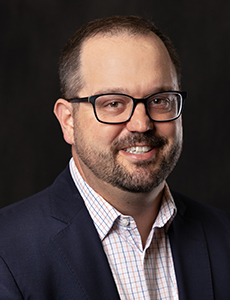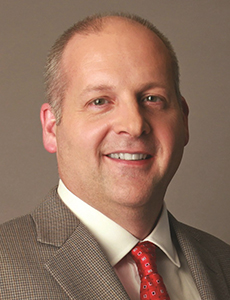Sponsored Content by One Call
Optimal Coordination

Best-in-class care coordination begins well before the operating room doors open.
“The surgical solution should really start even before the surgery happens,” explains Brian Murphy, PT, DPT, COMT, Vice President of Physician Strategy and Market Development at One Call. “In most cases, unless it’s an emergency, physicians plan surgeries three, four, or five weeks in advance, providing ample time to coordinate services.”
This preparation window creates opportunities for comprehensive planning that addresses the full spectrum of post-surgical needs. Early coordination encompasses physical therapy scheduling, durable medical equipment delivery, home health services, transportation arrangements, and translation services when needed. The goal extends beyond mere logistics — it requires understanding each patient’s complete health profile, including pre-surgical fitness levels, nutritional status, and lifestyle factors that influence recovery.
Clear communication proves equally critical in setting realistic expectations. Healthcare professionals from surgeons to case managers must ensure patients understand both the procedure itself and the recovery timeline. This dynamic becomes particularly important in workers’ compensation cases, where educational backgrounds vary widely and language barriers may exist. When patients lack clarity about their treatment plan, recovery outcomes suffer accordingly.
The most effective coordination models utilize a single point of contact to manage all ancillary services. This approach eliminates the confusion and delays that typically arise when multiple vendors handle different aspects of care coordination, creating seamless transitions between surgical intervention and rehabilitation.
Systemic Obstacles Undermining Recovery Success

Brian Murphy, PT, DPT, COMT, Vice President of Physician Strategy and Market Development, One Call
The workers’ compensation system presents unique challenges that complicate post-surgical care coordination. Recent studies indicate that workers’ compensation surgeries tend to yield more delayed recovery outcomes when compared to non-work comp cases.
“There are lots of points of failure throughout the process, whether related to authorization rules or other aspects of the system,” Murphy notes. “The complexity creates numerous opportunities for the ball to be dropped.”
Injured workers represent a particularly vulnerable population facing pressure from multiple stakeholders. Employers, case managers, adjusters, physicians, and family members all expect quick returns to work, creating additional stress during an already difficult recovery period. This pressure frequently contributes to secondary injuries — mental health conditions that develop after the initial physical trauma.
Mental health complications prove especially problematic for recovery outcomes. Murphy observes that “patients suffering from stress, anxiety, depression, or other mental factors perform poorly in rehabilitation settings, whether surgical or non-surgical.” Financial pressures compound these issues, as injured workers worry about supporting dependents while unable to work at full capacity.
Pre-existing workplace dissatisfaction serves as a leading indicator for poor outcomes. Workers already unhappy in their jobs before injury tend to experience worse post-surgical results. This correlation suggests that workplace culture and employee relationships significantly influence recovery trajectories.
The general health status of workers’ compensation patients also presents challenges. With approximately 60% of American calories coming from ultra-processed foods, many injured workers enter surgery in poor nutritional and physical condition. Factors like smoking, alcohol use, inadequate sleep, and overall fitness levels all impact surgical outcomes and rehabilitation success.
Putting the Patient First
Having the right services and equipment in place following surgery increases the chances of a successful recovery and return to work. While the post-surgical process can be stressful for physicians and patients alike, Murphy points out that having a dedicated contact helps alleviate challenges. Engaging with physicians and patients early to schedule services and equipment delivery is also vital.
“When it’s a surgical situation, physicians usually know the services patients will need well in advance,” he says. “Coordinating those services with a single point of contact can be important. Using multiple vendors can be disruptive to the care coordination process. That’s why One Call offers a full suite of ancillary services for our patients.”
Murphy also notes when post-surgical care coordination is done right, the patient reaps multiple benefits:
- Optimal healing – Well-timed delivery and proper use of postoperative medical equipment creates an ideal environment for tissues to heal.
- Prevention of complications – Timely interventions help prevent common post-surgical complications.
- Enhanced recovery – Access to physical therapy and rehabilitation services improves mobility and strength, helping patients regain their independence faster.
- Reduced hospital readmissions – Effective home health care services reduce the likelihood of complications that require readmission to the hospital.
Strategic Solutions for Coordinated Care Excellence
Addressing care coordination challenges requires both systematic approaches and human-centered care delivery. Early engagement proves crucial — contacting injured workers within hours of referral and ensuring prompt physical therapy initiation leads to better outcomes, fewer required visits, and faster return-to-work timelines.
Technology-enabled oversight helps maintain quality standards throughout the recovery process. Systematic triggers can identify when patients deviate from expected recovery paths, allowing for proactive interventions. At-risk programs specifically target injured workers likely to experience poor outcomes, providing enhanced clinical oversight and support.
Provider network management also influences coordination success. Scoring healthcare providers based on clinical outcomes, administrative efficiency, and billing compliance enables better referral decisions. This data-driven approach ensures injured workers receive care from the most effective practitioners available.
However, technology and systems alone cannot address the human elements of recovery. Empathy emerges as a low-cost, high-impact intervention that healthcare professionals can implement immediately.
“Being aware of their situation, actively listening, and being present during conversations are essential approaches,” Murphy emphasizes. “Simple coaching on sleep hygiene and meditation techniques can also help manage stress and anxiety effectively.”
Organizations that effectively implement comprehensive coordination strategies — combining early engagement, systematic oversight, and human-centered communication — will likely see competitive advantages through improved patient satisfaction and better clinical results.
Success ultimately depends on recognizing that post-surgical care coordination extends far beyond scheduling appointments and authorizing services. It requires understanding injured workers as complete individuals facing complex challenges that extend well beyond their physical injuries.
To learn more, visit: https://onecallcm.com/.
This article was produced by the R&I Brand Studio, a unit of the advertising department of Risk & Insurance, in collaboration with One Call. The editorial staff of Risk & Insurance had no role in its preparation.










